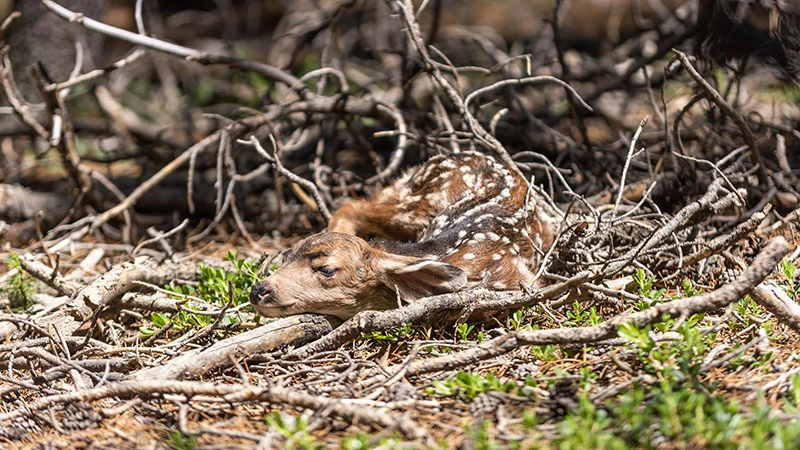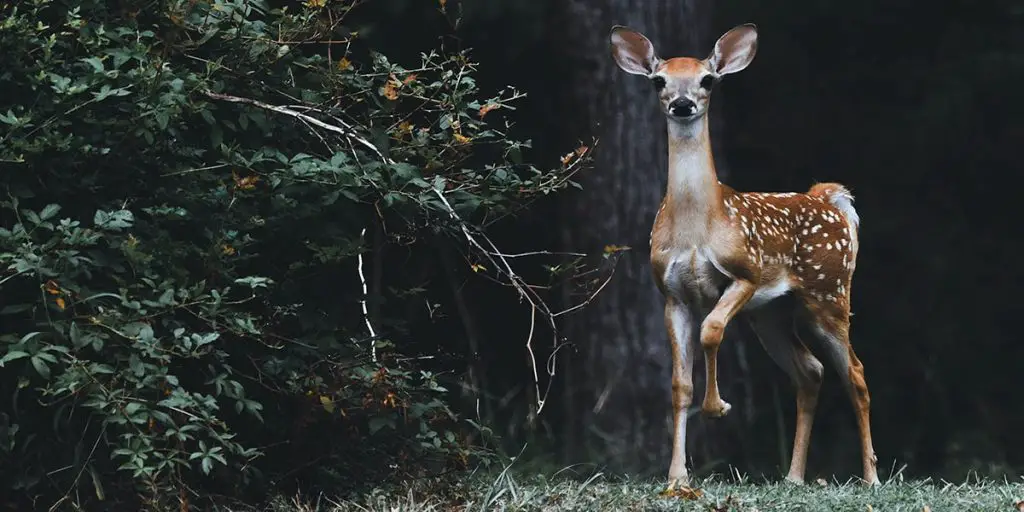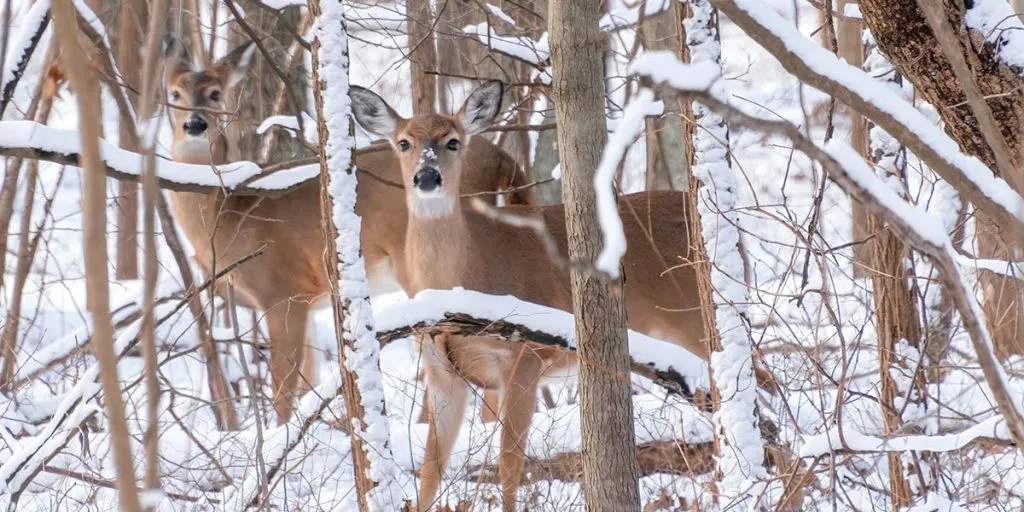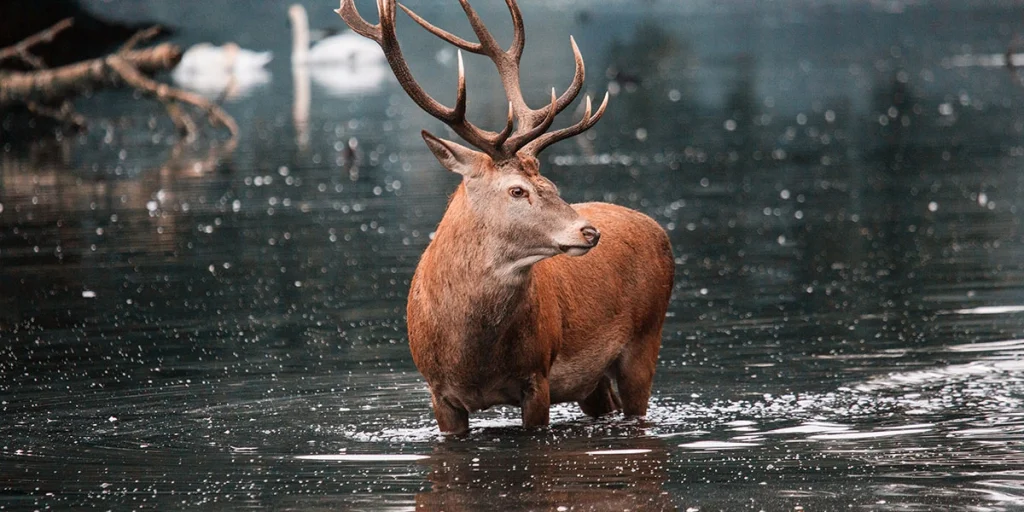There is a persistent myth going around that deer are nocturnal animals, i.e. wildlife that is most active at night. While you might encounter them in the wild after dark, this is not their moment of peak activity.
Deer are not nocturnal, but are instead considered crepuscular animals, meaning they are most active during the twilight period. When the sun rises in the early morning, and when the sun starts setting again late at night, you’ll most likely be able to encounter a deer in the wild.
Activity for deer also increases according to gender, with males having increased nighttime activity during the winter months. A full moon may also increase activity levels in both male buck and female doe.
Not Nocturnal, But Crepuscular
Nocturnal animals will only come out after dark, but deer are most active when the sun is rising or setting. Deer are therefore not considered nocturnal, but crepuscular animals. The morning dawn and evening dusk are the moments of the day a deer will come out to forage for food.
The main benefit of being a crepuscular animal is the ability to avoid a lot of predators. It will also give an animal a more comfortable temperature between the extremes of day and night. Human activity is also low during the early morning and late evening, making it easier for wildlife to move around in their natural habitat.
In countries further away from the equator, dusk and dawn will stretch for a longer period of time. Places such as Northern USA, Canada, and the UK are more likely to have flourishing crepuscular wildlife. Places nearer the equator see the onset of darkness fall quickly, giving crepuscular animals less time to be active.
Deer Sleeping Habits
High alertness is the key to the average sleep cycle of a deer. In a time period of about 30 minutes, a deer will take quick naps of 30 seconds to 3 minutes every time. The animal will wake, check for predators, stretch, and doze off again for more short 3-minute sleep intervals.
Most of their sleeping is done during daylight hours. This doesn’t just help them stay warmer, it will also help with avoiding potential predators. You can imagine that quick naps in the high grass give most deer the opportunity to see danger coming from far away.
During the cold winter months, activity reduces a lot. However, a deer will not hibernate in winter. Instead, they will hunker down in a sheltered location and go into ‘torpor‘, a state of prolonged physical and mental inactivity. Even in the cold, the hours of sleep the animals get are limited due to the constant looming threat of predators.

How Much Do Deer Sleep?
On an average day, deer will sleep in short intervals for about 4 to 5 hours. They will be alert for most of this time, as only 30 minutes of their total sleep cycle consists of a deep sleep state (REM sleep). Deer take quick naps of about 3 minutes each time, in between they will be awake.
The alertness of a deer is comparable to that of a regular house cat. While their eyes are closed during a nap, their ears and nose are always active. This limits the ability of their brain to fully get into a deeper state of sleep, of which they get very little.
During the 4 to 5 hours of total sleep time, deer are likely to move between different locations. They usually do this to move away from noise or activity, since they are sleeping during the day most of the time.
Where Do Deer Sleep?
Deer most commonly sleep in areas that provide them cover, such as fields with high grass, near bushes, or behind fallen trees in the woods. The animals will sleep anywhere they want to sleep, as long as it makes them feel safe.
You can recognize where deer sleep by the oval shape on the ground. Any grass or other materials will be flattened by the weight of the animal. Deer always have multiple bedding areas in a range of roughly one square mile. They will move between sleeping locations multiple times a day.
Areas with access to fresh water and food are the preferred sleep locations of most deer. When these are abundant, it is likely that more animals of the same species are present in the area. You might even encounter multiple specimens sleeping together.
Do Deer Sleep Together?
In general, most deer tend to sleep alone in a hiding spot of their own choosing. However, they will also sleep together when given the opportunity, especially during the colder winter months. Deer are even known to sleep in small groups to protect themselves from predators or the cold.
The animals can be very social and will definitely tolerate each other’s presence. One major exception is the mating season from late September to December. You’ll obviously never see two fighting male bucks sleeping in the same area together.
When To Best Spot Deer In The Wild
You probably found this article because you wanted to find out when you could encounter a deer in the wild. So to help you filter for this information, here are the main points to take away:
- Deer are not nocturnal but crepuscular animals, even though they can be active at night
- You’ll most likely encounter a deer during early sunrise, or late in the day during sunset
- The animals are most active in summer, when food is abundant and fawns have grown enough
- Explore for oval-shaped bedding spots in fields and near woods, with nearby access to water
- Be patient, quiet, and respectful when trying to spot wild animals, because they will only show themselves when they feel safe



